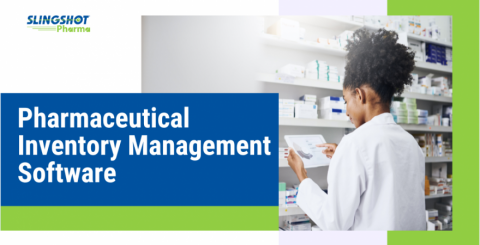5 Key Features to Look for in Pharmaceutical Inventory Management Software for cGMP Compliance

In the highly regulated world of pharmaceutical manufacturing, inventory management is far more than just tracking stock levels. It’s a critical component of ensuring product safety, quality, and compliance with current Good Manufacturing Practices (cGMP). A single error in material handling—such as using an expired lot or releasing untested raw materials—can lead to costly recalls, regulatory penalties, or even patient harm.
That’s why choosing the right pharmaceutical inventory management software is not just about efficiency—it’s about compliance, traceability, and risk mitigation. With increasing scrutiny from regulatory bodies like the FDA and adherence to standards such as 21 CFR Part 11, companies need robust systems that go beyond basic inventory tracking.
In this article, we’ll explore the five essential features your pharmaceutical inventory management software must have to support cGMP compliance and streamline operations across labs, warehouses, and contract manufacturing organizations (CMOs).
1. Lot-Based Tracking with Full Audit Trails
One of the foundational requirements of cGMP is complete traceability of materials throughout their lifecycle. This means every batch or lot of raw material, intermediate, or finished product must be uniquely identifiable and fully traceable from receipt to final disposition.
Why it matters: Regulators require that you can answer questions like:
- Where did this lot come from?
- Has it been tested?
- Is it released, quarantined, or expired?
- Who approved the status change?
What to look for: Your pharmaceutical inventory management software should offer lot-level control with automated status tracking (e.g., Quarantine → Released → Expired) and comprehensive audit trails. But not all audit trails are created equal. Look for systems that provide:
- Field-level auditing – Tracks changes to critical data fields (like expiry dates or storage conditions).
- Transaction-level logging – Records every inventory movement, including who performed the action, who reviewed it, why it was done, and when.
- Electronic signatures – Required under 21 CFR Part 11 for any status change or critical transaction.
For example, Slingshot Pharma’s cGMP Inventory Control automatically logs every transaction with full user attribution and reason codes, ensuring compliance during audits and inspections.
2. Automated Material Status Management Based on Expiry & Retest Dates
Pharmaceutical materials often have strict shelf lives and retesting requirements. Manually tracking these dates across hundreds of SKUs is not only inefficient—it’s risky.
Why it matters: Using expired or untested materials violates cGMP and can compromise product quality. Regulatory agencies expect systems to prevent such errors before they occur.
What to look for: Choose software that includes automated status workflows triggered by date-based events:
- Automatically change lot status to “Expired” when the expiry date is reached.
- Revert status back to “Quarantine” when a retest date arrives, requiring fresh testing before reuse.
- Log all automatic status changes in the audit trail for full transparency.
This automation reduces human error, ensures timely actions, and provides documented proof of compliance—crucial during FDA inspections.
3. Cold Chain & Environmental Monitoring Capabilities
Many pharmaceutical materials—especially biologics, vaccines, and certain APIs—require strict temperature and humidity controls. Deviations can degrade product quality and invalidate batches.
Why it matters: The “cold chain” must remain unbroken from receipt through storage and distribution. Any breach must be recorded, reviewed, and justified.
What to look for: Your pharmaceutical inventory management software should integrate environmental requirements at both the material level and storage location level:
- Define storage conditions (e.g., 2–8°C, 30–60% humidity) for each material.
- Assign environmental capabilities to warehouse zones.
- Prevent users from placing temperature-sensitive materials in non-compliant locations.
- Set up time-out-of-spec alerts – For example, if a material is staged outside refrigeration, the system should warn users as the allowable “time out of temp” limit approaches.
These intelligent controls help maintain product integrity and provide auditable records of environmental compliance.
4. Multi-Owner Inventory Support for CMOs and 3PLs
Contract Manufacturing Organizations (CMOs) and third-party logistics providers (3PLs) often manage inventory for multiple clients within the same facility. Mixing ownership or misallocating materials can lead to compliance failures and client disputes.
Why it matters: Each client’s inventory must be tracked separately, with clear ownership, access controls, and reporting. Regulatory accountability lies with the product owner, so traceability by owner is essential.
What to look for: Ensure your software supports multi-owner inventory models, allowing:
- Separate tracking of materials by customer or sponsor.
- Role-based access so users only see their designated inventory.
- Ownership transfer workflows with electronic signatures and audit logging.
This feature is especially valuable for CMOs handling GMP materials for multiple pharmaceutical companies, enabling clean separation while using a single system.
5. Flexible Units of Measure & Packaging Hierarchy Management
Pharmaceutical inventory often involves complex packaging structures—think bulk drums, intermediate containers, vials, and retail kits. Materials may be received in large units but dispensed in smaller ones, requiring precise conversion and labeling.
Why it matters: Accurate unit tracking ensures correct material usage, prevents waste, and supports accurate labeling and billing.
What to look for: The ideal pharmaceutical inventory management software should allow:
- Definition of multiple units of measure (UoM) per material (e.g., kg, liters, vials, boxes).
- Designation of a “sell unit” for commercial reporting and invoicing.
- Tracking of sell unit ranges within larger packaging (e.g., a case may contain 96–100 vials).
- Support for breaking down large units into smaller ones (e.g., splitting a drum into bottles) or building up kits from components.
This flexibility ensures accuracy across procurement, production, and distribution while maintaining full traceability.
Bonus: Additional cGMP-Ready Capabilities
While the above five features are critical, leading systems also offer:
- Cycle counting – For ongoing inventory accuracy without full shutdowns.
- Material Transfer Orders (MTOs) – To document internal movements between departments or facilities.
- Stock replenishment workflows – Triggered via work orders or purchase orders.
- Equipment maintenance tracking – Ensuring instruments used in inventory handling are calibrated and compliant.
These features enhance operational efficiency while reinforcing GMP principles.
Final Thoughts: Choosing the Right Partner in cGMP Compliance
When evaluating pharmaceutical inventory management software, don’t just focus on inventory counts and reorder points. Ask: Does this system enforce cGMP best practices? Can it protect my company during an audit? Will it scale with my operations? The right solution—like Slingshot Pharma’s cGMP Inventory Control—doesn’t just track inventory; it actively enforces compliance through automation, auditability, and intelligent workflows.
From lot tracking and expiry management to cold chain monitoring and multi-client support, these five key features form the backbone of a truly compliant inventory system. Investing in purpose-built, cGMP-compliant software isn’t just a regulatory necessity—it’s a strategic advantage that protects your brand, your patients, and your bottom line.
Similar Articles
Compare hydraulic and traction residential elevators to find the best fit for your home. Learn how each system works, their pros and cons, space needs, energy use, and maintenance requirements.
Extend the lifespan of your commercial marina docks with proactive maintenance. Learn essential inspection routines, material-specific care, and safety tips to protect your investment and ensure long-term dock performance.
Learn the key factors in designing an engineered fall protection system. Discover how hierarchy of controls, task analysis, structural integrity, and fall clearance ensure safety and compliance.
Today, modern businesses face constant pressure to operate with maximum efficiency. This requires a technology infrastructure that is both agile and robust. However, the traditional model of on-premises data centers often has significant limitations. These legacy systems can drain valuable resources from teams.
When people are hungry, standing in line for a table feels tiring and unpleasant. In fact, research shows that most individuals will just walk away if they have to wait longer. They will go and find another place to eat.
In the early stages of designing new community centers, fire stations and administration buildings, city planners and architects are forced to make a crucial decision: What building material is best suited for providing the most value, safety and longevity to the public?
Amazon Simple Queue Service (SQS), Simple Notification Service (SNS), and EventBridge are just a few of the messaging services that AWS provides to meet various demands when it comes to creating scalable and effective cloud systems.
Wearable technology, embracing devices small enough to be worn unobtrusively, constitutes a market that keeps expanding, and the momentum shows little sign of slowing
For job seekers, grasping the basic functions of Applicant Tracking Systems (ATS) is the first step in overcoming common job search barriers.









